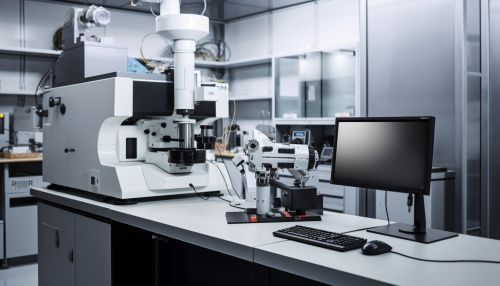Electron Microscopy
Introduction
Electron microscopy is a technique that uses a beam of accelerated electrons to generate an image of a specimen. It is capable of much higher magnifications and has a greater resolving power than a light microscope, allowing it to see much smaller objects in finer detail. The technique has found wide usage in both life and material sciences.
History
The development of electron microscopy can be traced back to the early 20th century. The first practical electron microscope was built in 1931 by the German physicists Ernst Ruska and Max Knoll. Ruska, for his part in the development of the electron microscope, was awarded the Nobel Prize in Physics in 1986 read more.
Principles of Operation
The basic principles of electron microscopy can be understood by comparing it with the operation of a light microscope. In a light microscope, a beam of light is focused through a lens onto a specimen, and the light that is transmitted through or reflected by the specimen is collected by another lens, which forms an image. In an electron microscope, a beam of electrons replaces the light, and electromagnetic lenses replace the glass lenses.
Types of Electron Microscopes
There are two main types of electron microscopes: the transmission electron microscope (TEM) and the scanning electron microscope (SEM). Each has its own unique capabilities and is suited to different kinds of examination.
Transmission Electron Microscope (TEM)
The transmission electron microscope (TEM) operates on the same basic principles as the light microscope but uses electrons instead of light. In a TEM, the electron beam is transmitted through the specimen. Depending on the thickness and density of the specimen, some electrons are absorbed while others pass through. The transmitted electrons are then focused onto a detector to form an image.
Scanning Electron Microscope (SEM)
The scanning electron microscope (SEM) operates differently from the TEM. Instead of transmitting electrons through the specimen, the SEM generates a focused beam of electrons that scans across the surface of the specimen. The electrons that are scattered or emitted from the specimen are then detected and used to generate an image of the surface.
Applications
Electron microscopy has a wide range of applications in various fields such as materials science, biology, geology, and more. In materials science, for instance, electron microscopy is used to investigate the structure, composition, and properties of materials at the nanoscale. In biology, electron microscopy is used to study the detailed structure of cells and tissues, viruses, and other microscopic entities.
Advantages and Limitations
Electron microscopy offers several advantages over other forms of microscopy. The most significant advantage is its high resolution, which allows for the visualization of structures at the atomic level. However, electron microscopy also has its limitations. For instance, the preparation of samples for electron microscopy can be complex and time-consuming. Additionally, because electron microscopy requires a vacuum, it cannot be used to image living organisms.
Future Developments
The field of electron microscopy continues to evolve, with new techniques and improvements being developed. One such development is the advent of cryo-electron microscopy, which allows for the imaging of specimens in their native, hydrated state. This has opened up new possibilities in the field of structural biology, allowing for the visualization of biomolecules in unprecedented detail.
See Also


